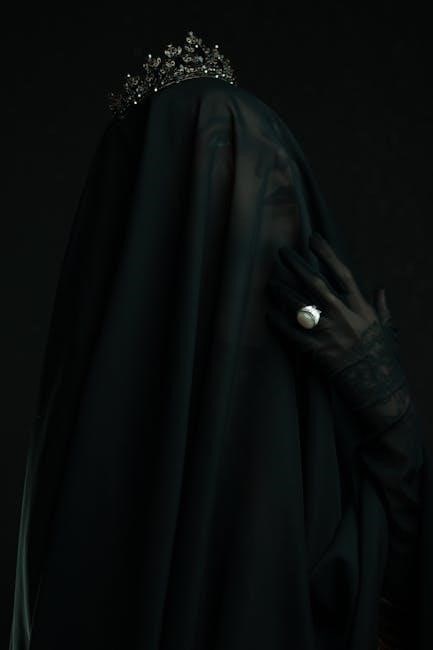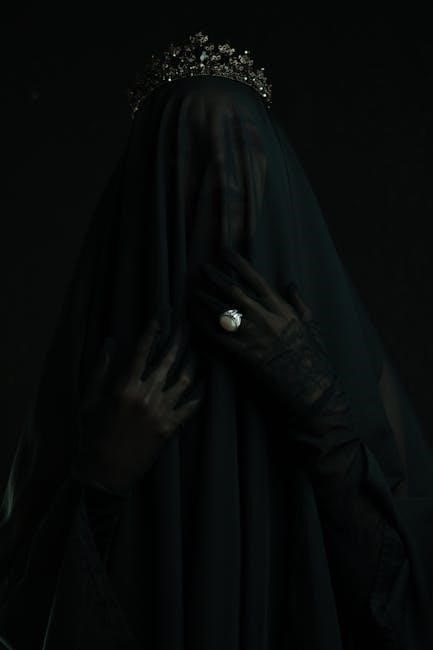
the thomas crown affair 1968 script pdf
Availability of the 1968 “The Thomas Crown Affair” Script
The 1968 script is accessible online in PDF & text formats; Excerpts are available, featuring key character introductions.
Online Access to the Script
Locating the complete, original 1968 screenplay for “The Thomas Crown Affair” can be achieved through several avenues. Digital archives specializing in film scripts often host such material, offering downloadable PDFs or online viewing options. Websites dedicated to screenwriting resources, like Script Slug or Screenwriters Network Script Library, might provide access to the script, sometimes for free or through a subscription service. University libraries or specialized film archives may also hold copies of the script, accessible through their online catalogs or in person. Be sure to verify the authenticity and completeness of any script found online, comparing it to known details of the film. Some sites offer excerpts, focusing on key scenes or character introductions, which can serve as valuable resources even if the full script isn’t available. Remember to respect copyright laws when accessing and using these materials.

Alan Trustman: The Screenwriter
Alan Trustman (1930-) penned the 1968 film. A lawyer turned screenwriter, he’s known for “Bullitt” & “They Call Me Mr. Tibbs!”.
Trustman’s Filmography
Alan R. Trustman’s notable screenwriting credits extend beyond “The Thomas Crown Affair” (1968). He also penned the screenplay for the iconic Steve McQueen film, “Bullitt” (1968), a crime thriller celebrated for its innovative car chase sequences and gritty realism. Furthermore, Trustman contributed to the socially conscious drama “They Call Me Mr. Tibbs!” (1970), a sequel to “In the Heat of the Night,” continuing the story of Detective Virgil Tibbs. These three films represent the most significant works in Trustman’s filmography, showcasing his ability to craft compelling narratives across different genres within the late 1960s and early 1970s. While he may have other writing credits, these three are consistently highlighted when discussing his contributions to cinema, solidifying his place as a noteworthy screenwriter of his era. His background as a lawyer likely informed his ability to construct intricate plots and develop complex characters, adding depth to his storytelling. Each film demonstrates his skill in creating memorable cinematic experiences.

Synopsis of the 1968 Film
Thomas Crown, a bored millionaire, orchestrates a bank heist. An insurance investigator, Vickie, is hired to recover the money.
Thomas Crown’s Motivation
Thomas Crown, a self-made billionaire, suffers from ennui. He can buy anything he desires and faces no challenges in acquiring material possessions or attracting women. This lack of stimulation leads him to seek thrills and excitement through unconventional means. Crown’s wealth has insulated him from the everyday struggles and risks that most people face, creating a void in his life. He views the meticulously planned bank robbery not as a means to financial gain, but as an intellectual exercise and a test of his abilities. The heist provides him with the adrenaline rush and sense of accomplishment that his ordinary life lacks. For Crown, the act of stealing priceless objects is a hobby, a way to introduce unpredictability and danger into his otherwise predictable existence. He is driven by a desire to prove his intelligence and resourcefulness, pushing himself to outsmart the authorities and those who underestimate him. The risk involved in the crime is a key component of his motivation, as it offers a challenge that his vast wealth cannot provide. Ultimately, Thomas Crown’s motivation stems from a deep-seated need to escape the boredom and complacency that come with unimaginable wealth and privilege.
Vickie Anderson’s Investigation
Vickie Anderson, an independent insurance investigator, is brought in to recover the millions stolen in the daring bank heist. Unlike the police, who focus on conventional suspects, Vickie approaches the case with a unique perspective and an unwavering determination. She is sharp, intuitive, and possesses a keen understanding of human behavior, allowing her to identify Thomas Crown as a potential suspect. Her investigation begins by meticulously examining the individuals who had sufficient knowledge of the bank’s operations to orchestrate such a complex robbery. As she delves deeper, she uncovers Crown’s involvement, recognizing his intelligence and the possibility that he orchestrated the crime for the thrill of it, rather than financial gain. Vickie’s investigation is characterized by her relentless pursuit of the truth, her willingness to take risks, and her strategic approach to confronting Crown. She doesn’t rely solely on evidence; she uses her wit and charm to engage with Crown, attempting to understand his motivations and expose his guilt. The investigation becomes a cat-and-mouse game, a battle of wits between two intelligent and determined individuals. Vickie’s expertise and unconventional methods make her a formidable opponent for Crown, driving the narrative forward with suspense and intrigue.

Key Scenes and Dialogue
Memorable scenes define the film.The opening scene introduces Crown & Erwin, establishing Crown’s mysterious nature and wealth.
The Opening Scene with Crown and Erwin
The initial encounter between Thomas Crown and Erwin is pivotal, setting the tone for the entire film. This scene, found in screenplay excerpts, showcases Crown hiring Erwin for an undefined task, immediately establishing an air of mystery and intrigue. Crown’s payment of $50,000 upfront underscores his wealth and willingness to take risks. The dialogue is crisp and efficient, hinting at the complex relationship that will unfold. This scene is crucial for understanding Crown’s character, a bored millionaire seeking excitement through criminal activities. Erwin’s role, though initially vague, is essential to the heist’s execution. The screenplay excerpt highlights the power dynamics and establishes the foundation for the elaborate plan that follows, captivating the audience from the very beginning. It introduces the key elements of wealth, mystery, and criminal intent that define “The Thomas Crown Affair.” The scene also provides a glimpse into the meticulous planning and the calculated risks that Crown is willing to take, further emphasizing his unique blend of intelligence and audacity.
The Chess Scene
The chess scene is a critical juncture in “The Thomas Crown Affair,” loaded with symbolism and tension. It represents the intellectual and strategic battle between Thomas Crown and Vickie Anderson. The dialogue is sharp and suggestive, masking their true intentions beneath the surface of a seemingly innocent game. This scene, often highlighted in script analyses, reveals the complex dynamic between the two characters. Each move mirrors their cat-and-mouse pursuit, showcasing their intelligence and cunning. The chess game is a metaphor for the larger game they are playing, with each trying to outwit the other. The script likely emphasizes the non-verbal communication and subtle cues that convey their underlying feelings and strategies. The chess scene underscores the film’s themes of power, control, and attraction. Anderson’s investigation intensifies as she gets closer to Crown, and the chess game becomes a way for them to test each other’s resolve. The scene’s impact lies in its ability to create suspense and reveal the characters’ personalities through their calculated moves and veiled conversations. It’s a battle of wits that captivates the audience and foreshadows the ultimate outcome of their complex relationship.
Title Sequence and Design
Pablo Ferro designed the title sequence. It used Commercial Script font. It is iconic to the film, and very fast paced.
Pablo Ferro’s Contribution
Pablo Ferro significantly contributed to “The Thomas Crown Affair” (1968) through his innovative title sequence design. His work is characterized by its dynamic and fast-paced editing, employing a distinctive split-screen technique that showcases multiple simultaneous actions, heightening the sense of tension and excitement inherent in the heist narrative. Ferro’s approach to the title sequence was groundbreaking, setting a new standard for visual storytelling in film introductions. He masterfully integrated typography, using Commercial Script for the titular character’s name, adding to the film’s sophisticated and stylish aesthetic. The rapid cuts and juxtaposed imagery effectively convey the multifaceted nature of Thomas Crown’s character and the intricate planning involved in his criminal endeavors. Ferro’s contribution not only enhanced the film’s opening but also established a visual language that resonated throughout the movie, influencing subsequent title sequence designs in the heist genre and beyond, making it a truly unforgettable cinematic experience.
Script Variations and Drafts
The film’s script went through revisions, with an early version titled “The Crown Caper,” indicating evolving story ideas.
Working Title: “The Crown Caper”
Before it became known as “The Thomas Crown Affair,” the 1968 film initially carried the working title “The Crown Caper.” This earlier title suggests a slightly different emphasis, possibly leaning more heavily into the heist aspect of the story. Examining drafts under this title could reveal interesting variations in the plot, character development, or overall tone compared to the final released version. Script drafts bearing the “The Crown Caper” title might offer insights into the creative process and the evolution of the narrative. Perhaps certain scenes were more elaborate, or the motivations of the characters were presented differently. For researchers and film enthusiasts, comparing these drafts to the final script provides a valuable opportunity to understand the choices made during the film’s development. This includes understanding how the focus shifted from a straightforward caper to a more complex exploration of Thomas Crown’s character and his relationship with Vickie Anderson. The change in title also reflects a potential marketing strategy shift, emphasizing the central character’s allure and the intricate game of cat and mouse between Crown and Anderson.

The 1999 Remake Script
The 1999 remake features a script available online in PDF. It offers a modern take on the original’s themes and plot elements.
Leslie Dixon and Kurt Wimmer
Leslie Dixon and Kurt Wimmer are credited as the screenwriters for the 1999 remake of “The Thomas Crown Affair.” Dixon is primarily credited for the screenplay, while Wimmer also contributed to the screenplay. The remake, starring Pierce Brosnan and Rene Russo, presents a contemporary interpretation of the classic heist film. Their adaptation introduces new elements and character dynamics while retaining the core premise of a wealthy businessman engaging in elaborate schemes and a captivating insurance investigator on his trail. Dixon’s experience in adapting material for the screen, combined with Wimmer’s action-oriented writing style, likely contributed to the film’s blend of suspense, romance, and stylish action sequences. Though not explicitly stated in the provided text, it is common for screenwriting credits to involve collaboration and revisions, suggesting that both writers played significant roles in shaping the final script for the 1999 film. Their collaborative efforts resulted in a commercially successful and well-regarded remake that resonated with audiences while paying homage to the original 1968 film.